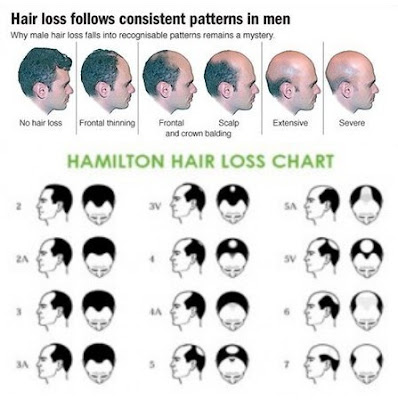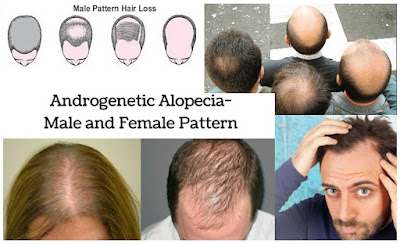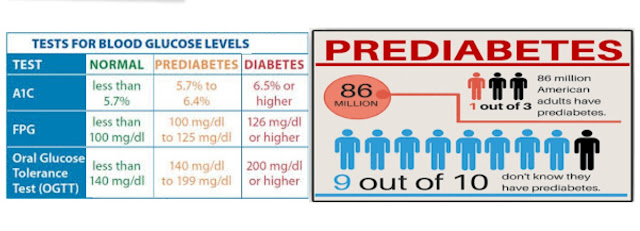Male Androgenic Hair Loss
Male androgenic also known as male pattern baldness is the most common type of hair loss world wide.
- Affects over 35 million men in the US alone.
- It is produced by a combination of genetic and hormonal factors.
- The word “Alopecia,” meaning baldness comes from the Greek word for “fox.”
HEALTHIENSIDE present - The mechanism behind this condition is an androgenic stimulus on the hair follicles in genetically susceptible people. Androgens are steroidal hormones that are responsible for developing and maintaining the male characteristics. The most important androgen is testosterone and its derived hormones such as dihydrotestosterone.
 |
| Male Androgenic Hair Loss Pattern |
This mechanism is the same in both males and females, but clinically they present differently. Potent androgens such as testosterone and dihydrotestosterone bind to the androgenic receptor on the hair follicle and produce atrophy or loss of function for that receptor. The enzyme responsible for the conversion of testosterone to dihydrotestosterone is called 5 alpha reductase. An inhibition of this hormone results in lower levels of dihydrotestosterone which consequently results in less hair loss.
Clinically hair becomes thin and short and falls at an increased rate beginning in the patients early 20′s or 30′s. This pattern begins in the frontal region and starts progressing toward the occipital region generally respecting the sides of the head which are not genetically affected. Hamilton’s hair loss chart demonstrates the different stages of androgenic hair loss.
The treatment options for this condition are limited. There are many treatments available that claim they cure this condition, but only few have clinically proven to produce beneficial effects on patients. Minoxidil 2% and (5% in some countries) is applied locally every 12 hours and has proven to be effective in stopping further hair loss when used during a period of at least 6 months.
Finasteride (commercially known as Proscar or Propecia) and more recently Dutasteride (Avodart), are anti androgens which block the enzyme 5 alpha reductase, have multiple clinical trials that show they significantly reduce hair loss and promote hair growth in patients with continuous long term use. There are also vitamin based formulas and plant extracts that have shown beneficial effects although they lack larger clinical trials to scientifically validate their use.
Surgical treatments have been perfected in recent years. The most recent techniques are autotransplants with 4 mm extractions from the occipital region and implanted over the alopecia areata of the head or a more meticulous procedure which involves individual follicle extraction and implantation. Although the success of these procedures depend greatly on the surgeons ability, in general hair replacement surgery is the only definitive treatment for male pattern hair loss.
READ ALSO: Best VCO for Hair Growth.











Comments
Post a Comment